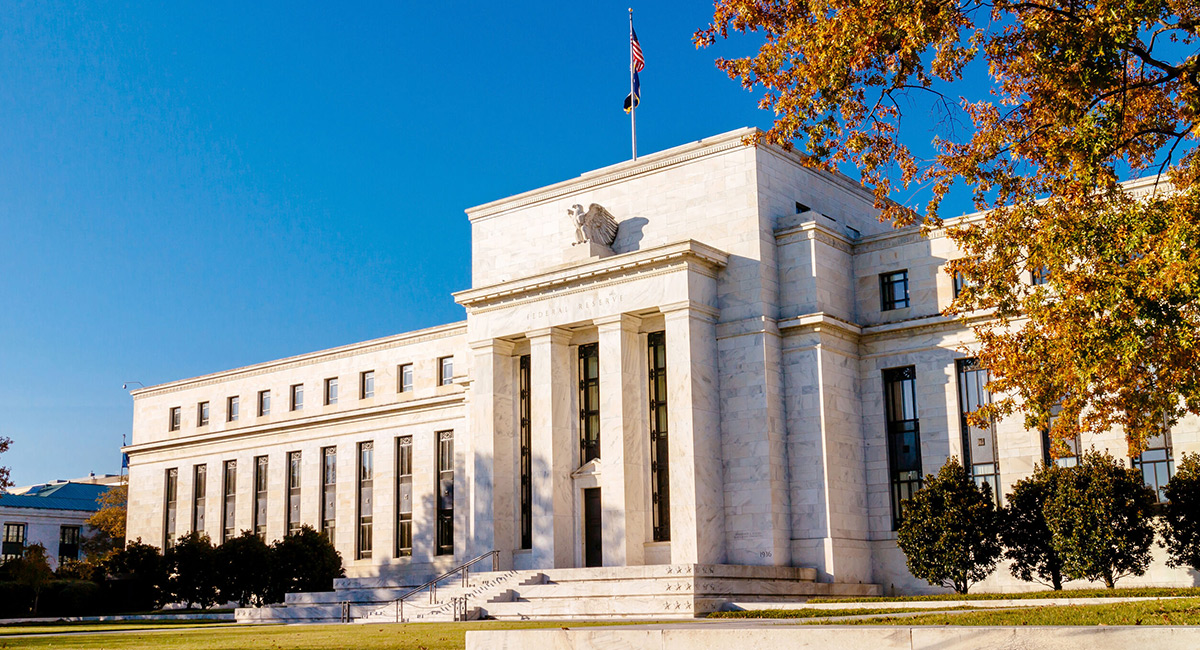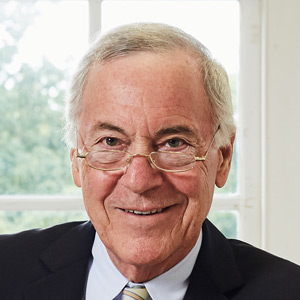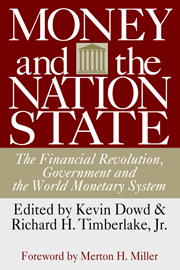Judy Shelton, one of President Trump’s nominees for the Board of Governors of the Federal Reserve System, has faced unprecedented criticism from former Fed employees and academic economists. The denunciations say more about the critics than they do about Shelton, whom I have known for many years.
Shelton is a nominee for one of the two unfilled positions on the twelve-member Fed Board. The other nominee, Christian Waller—an executive vice president and director of research at the Federal Reserve Bank of St. Louis—has attracted little attention. On July 21, the Senate Banking Committee approved his nomination by a bipartisan vote of 18-7, whereas Shelton’s nomination saw a party-line vote of 13 Republicans to 12 Democrats. The full Senate has not yet set a date to debate and vote on the nominations.
In separate open letters, dozens of former Federal Reserve employees and academic economists, including several Nobel Prize winners, have called on the Senate to reject Shelton. Assorted pundits, even here at National Review, have piled on.
The former Fed employees and economists are on the warpath because Shelton is not a member of their tribe and does not worship at their altar. She is unabashedly conservative, with a libertarian tilt, rather than liberal or centrist. Economics is not as left-leaning as other social sciences, not to mention the humanities, but conservatives, especially those associated with Trump, face a certain amount of snobbery within the discipline. Shelton has a Ph.D. in business administration from the University of Utah, rather than in economics from one of the nation’s elite universities.
The Fed chairman, Jerome Powell, does not have an economics degree, either. He is a lawyer by training, but his nomination raised few hackles thanks to his reassuringly bland manner and lack of original thought on monetary policy. Shelton has written at length on monetary policy, but unlike many other American economists who have done so, she has never worked for the Fed, and it has never funded her, keeping her independent of the influence typical of those within the Fed’s orbit.
As the open letters note, Shelton has “has advocated for a return to the gold standard; she has questioned the need for federal deposit insurance; she has even questioned the need for a central bank at all.” The letters also claim that “she appears to have jettisoned all of these positions to argue for subordination of the Fed’s policies to the White House.” Let’s consider these positions point by point.
The Gold Standard
From ancient times until 1971, the gold standard and its sister, the silver standard, were the norm. There have been many varieties of gold standard, depending on the particulars of who could issue currency and under what rules. Some varieties worked better than others. Common to all, though, was that gold retained a remarkably stable, long-run purchasing power.
In the 1960s, the Fed lost a considerable portion of its gold reserves by failing to maintain sufficiently tight monetary policy. In 1971, rather than endure a politically unpopular tightening of monetary policy to retain gold reserves, President Richard Nixon chose, in effect, to abandon the gold standard in the United States, starting a chain reaction that ended it internationally. After a difficult learning period of more than a decade, the Fed figured out how to keep inflation in low single digits.
Showing that economists are as much slaves to fashion as anyone else, the paper-money standard that has been in place for nearly 50 years has become a new orthodoxy. Chief among the flimsy criticisms of the gold standard has been the assertion that the Great Depression occurred because the Fed and another central bank, the Bank of France, adhered to the gold standard. But, under the paper standard, the United States has not been immune to depressions. Indeed, it has experienced two true depressions, not just garden-variety recessions, within the last 12 years. Experience both in the United States and internationallyindicates that the long-term performance of the international paper-money standard is nothing to crow about.
Shelton’s advocacy of the gold standard is also in harmony with a plank in the Republican Party platform proposing “a commission to investigate ways to set a fixed value for the dollar.” It is therefore curious on two counts that Senator Mitt Romney (R., Utah) has stated that he opposes Shelton’s nomination. First, his sentiments seem to be in conflict with the party’s own platform. Second, and even more astounding, he appears poised to cast a vote against someone who received her Ph.D. from Utah’s premier university.
Federal Deposit Insurance
The federal government adopted deposit insurance after the banking panic of the Great Depression hit thousands of banks, mostly small ones. Other countries had less-fragmented, more-solid banking systems because they did not prohibit nationwide branch banking. Canada, for example, had no bank failures during the Depression, and when the country adopted deposit insurance in 1967, it was over the objections of its big banks, who did not want it because it was an implicit subsidy from them to small banks. As with other government programs, good intentions do not guarantee good results, and there are circumstances under which deposit insurance can lead to less, rather than more, financial stability.
A Central Bank
The Federal Reserve began operations in 1914. By then, the United States had already become the world’s largest economy. Despite severe restrictions on branch banking, which made the banking system much less solid than it otherwise would have been, the U.S. economy did pretty well without the Fed. The rationale for establishing the Fed was connected with the problems of an artificially fragmented banking system. The Fed was a workaround for problems that did not exist elsewhere, including in Canada, which did not establish a central bank until 1935. The Fed’s long-term performance has been no better than that of the Civil War–era system it replaced, known as the National Banking System.
More generally, considering that the failure of central planning is a well-known historical fact—evident in the living examples of Cuba, North Korea, and Venezuela—it is worth asking what makes the banking system the exception. Scores of countries have had systems other than central banking. Hyperinflations have been exclusively a phenomenon of central banking or its cousin, the direct treasury issue of currency, though fortunately the United States has not been one of the victims. There are abundant grounds for thinking that central banking may not be ideal. The intellectual founder of modern central banking, Walter Bagehot, wrote in 1873 that “a monarchy in any trade is a sign of some anomalous advantage,” but then added that he would no more abolish the Bank of England as the British central bank than he would dispense with Queen Victoria. With our more republican traditions, we in the United States should not feel as bound by monarchical reasoning.
The economists’ guild and pundit pilers-on have criticized Shelton for reasonable positions. Her arguments should, at a minimum, be open for continuing discussion, rather than be stifled by a politically correct orthodoxy.
Subordination to the White House
Now, let’s address the final point of the open letters, an apprehension rather than a criticism of the economic principles that Shelton has discussed. President Trump has no more knowledge of monetary policy than he does of nuclear physics. Nevertheless, he has been ahead of the curve in pushing for easier monetary policy over the last few years, and the Fed has been behind the curve in implementing it. The Fed’s recent revision of its monetary-policy strategy is an indirect admission of its shortcomings. It pains the professionals to admit that an amateur has been right more often than they have. If it’s any consolation, Trump’s naïve view has coincided with the far more thoroughly considered views of the small group of “market monetarist” economists. My view of Shelton’s statements is not that she has changed her views in response to pressure from the White House, but that she has come to a greater appreciation of market monetarist-type reasoning.
The Fed’s assets are currently $7 trillion, around 33 percent of the expected output of the U.S. economy for 2020. Before the depression of 2008–09, the ratio for decades had been around 5–6 percent of annual output. Even during the Great Depression and World War II, it never reached 25 percent. The Fed has added lending to big businesses, small business, and municipal securities to its 2008 involvement in residential mortgage securities.
The Fed’s gargantuan and complex asset holdings mean correspondingly greater influence for bureaucrats and less for free markets. Today more than ever, the Fed Board of Governors needs a skeptic who will make it justify the unprecedented scope of its intervention.










